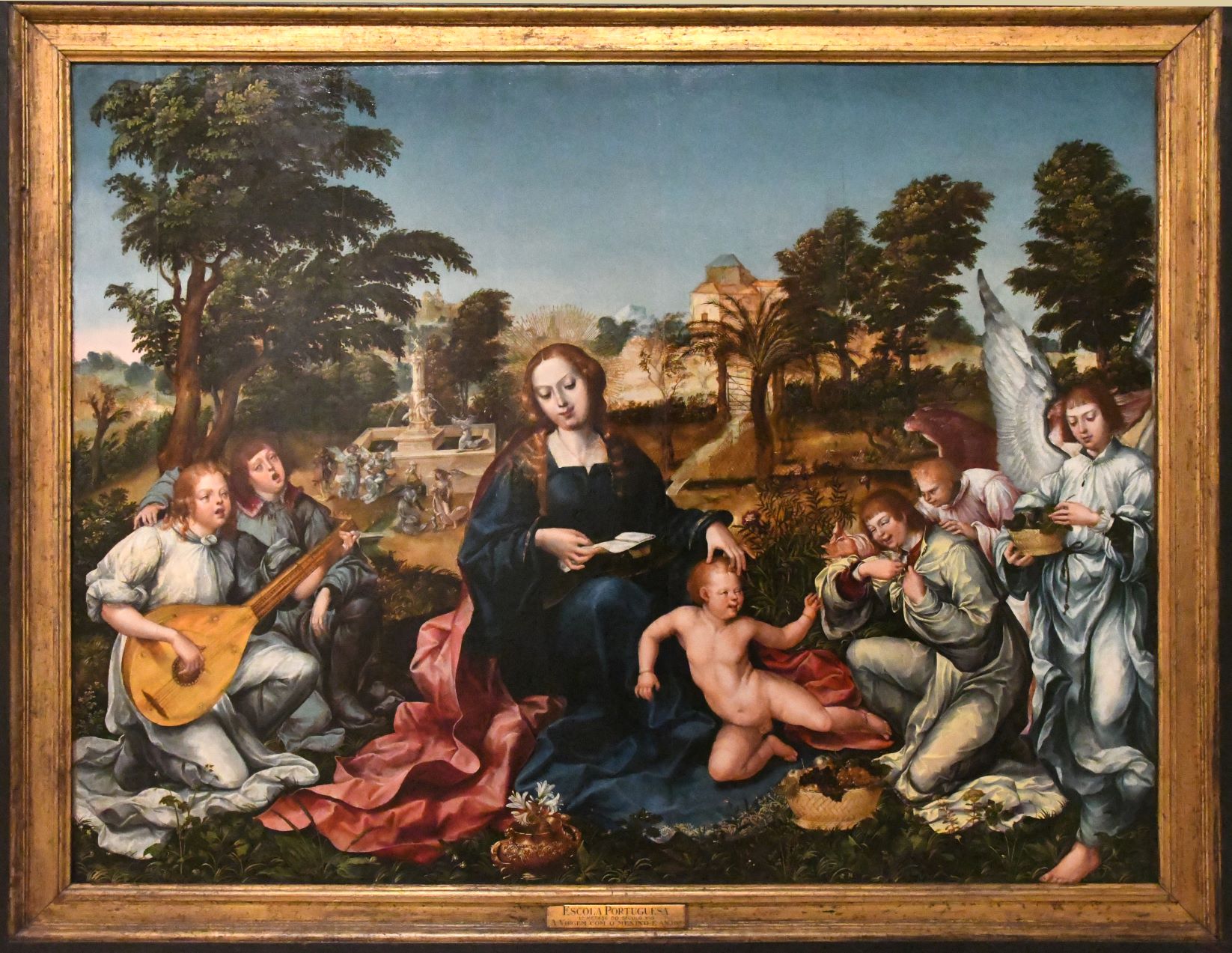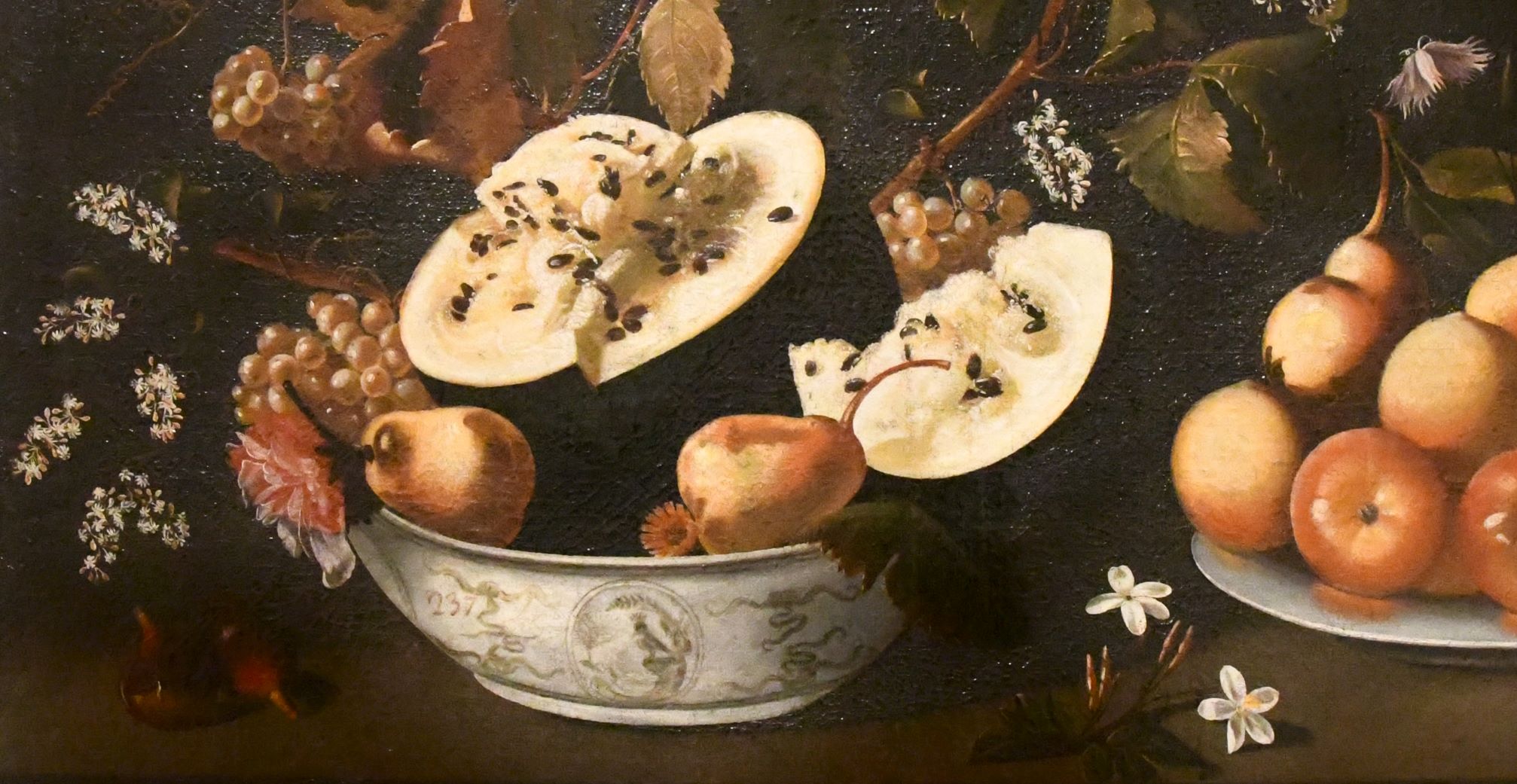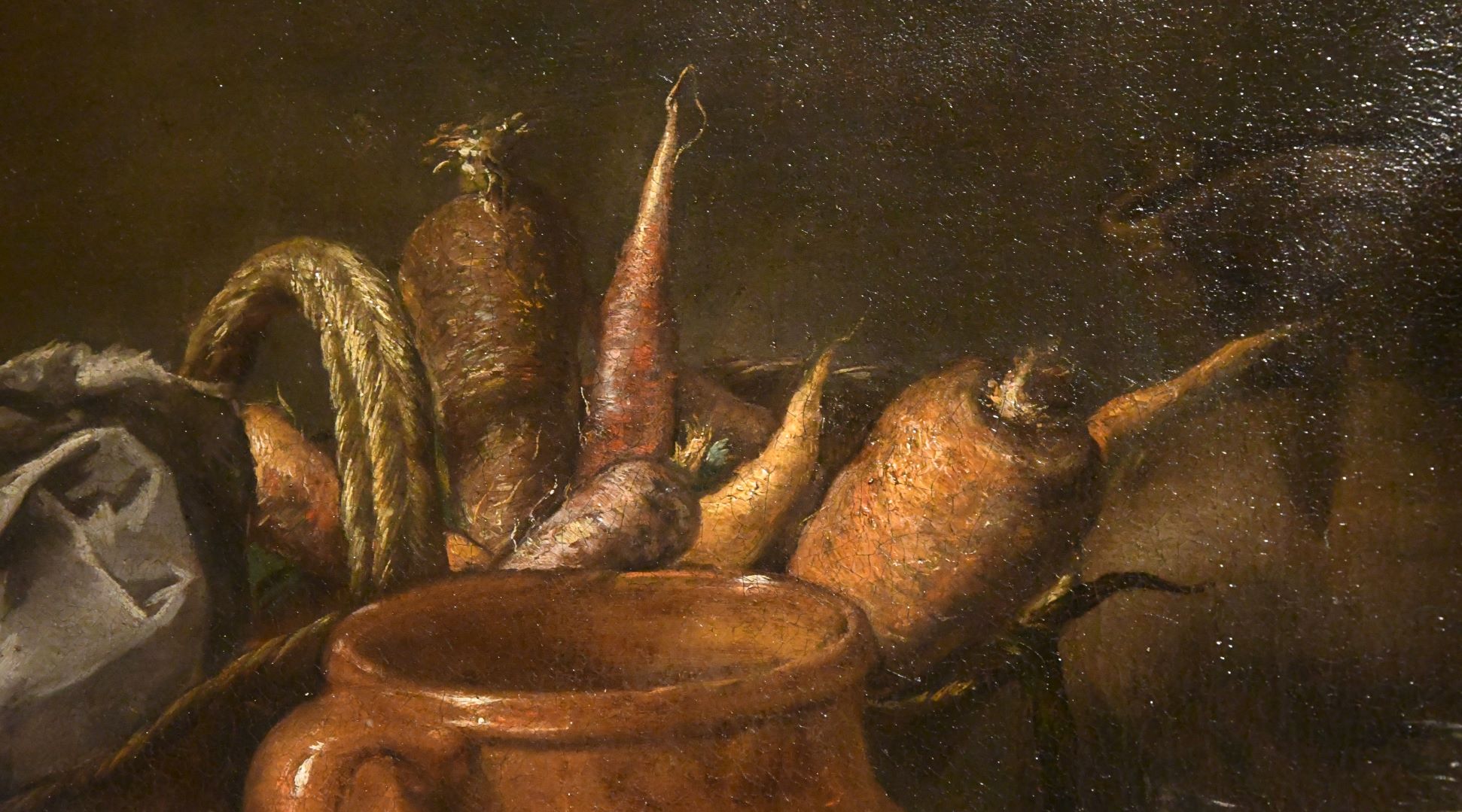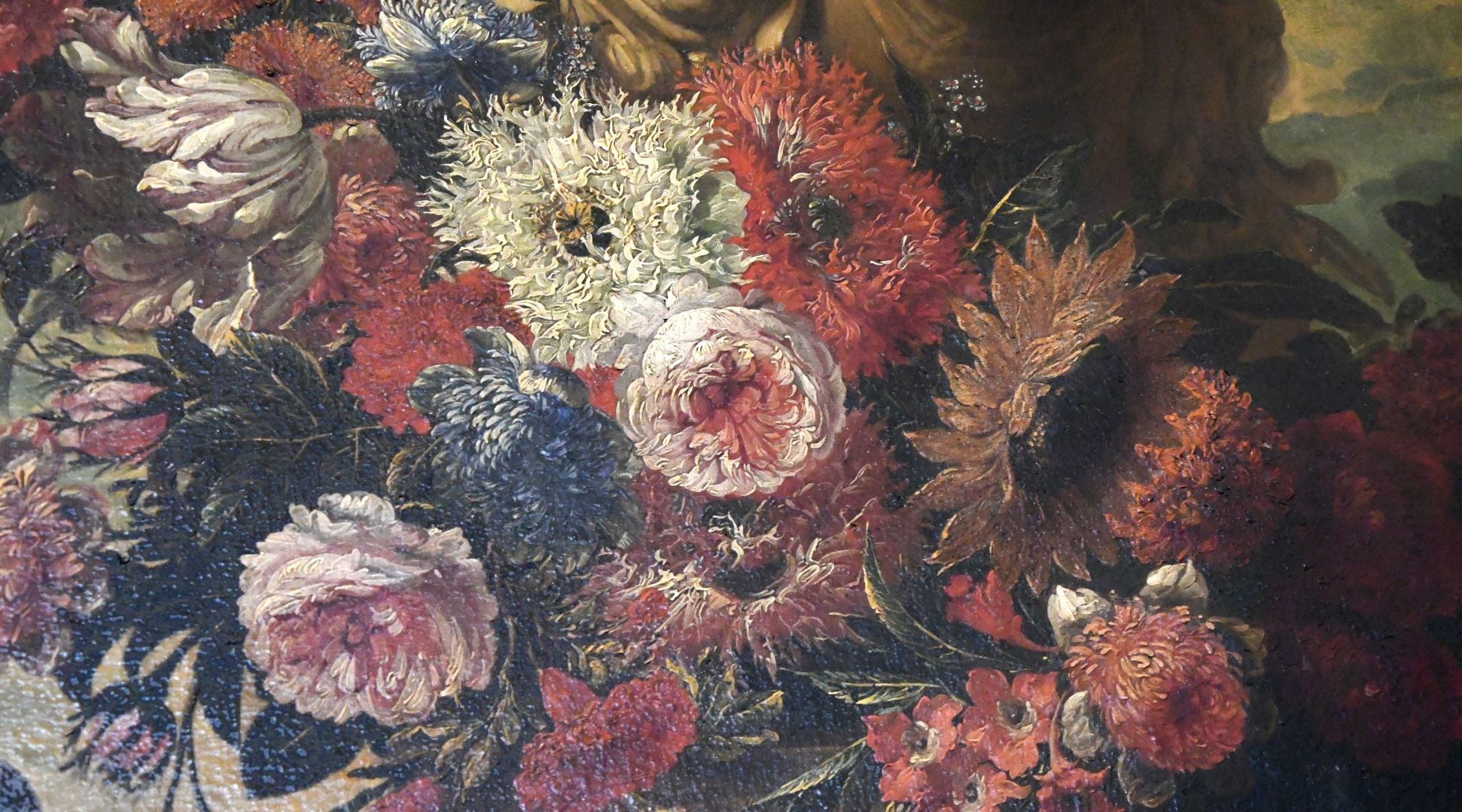
What can be learned from the plants represented in museum collections?
Plants are represented in art either with a symbolic purpose within a narrative or simply as a decorative element. A considerable degree of subjectivity is acceptable since artists can favour creativity rather than realism and their main goal is not to convey precise information on such plants. Nonetheless, most artistic representations of plants are very accurate and realistic. Therefore, the accurate figuration of flora in the art may provide valua¬ble historical information about the use of plants over time and about the cultivated varieties that were in use in different periods.
Analysis of botanical representation in the collection of the MNAA (Museu Nacional de Arte Antiga—National Museum of Ancient Art, in Lisbon), from the 15th to the early-17th centuries, thus opens up a new perspective on the works exhibited. Plants present in everyday life were the inspiration for the flowers, fruits and foliage represented in the works of the collection. These representations allow us to witness different stages in the evolution of the complex relationship between people and plants.
In the analysed works—consisting of painting, sculpture and tapestry—various typologies in plant representation can be clearly recognised, each with a distinct intention and significance. These can be grouped into four broad categories, as follows.
Figure 1 – The Virgin and Child with Angels, by Gregório Lopes, 1536-1539. MNAA, inv. 30 Pint.
The earlier works present plants mostly as symbolic elements, with a specific meaning within some narrative context. These are plants with a long symbolic tradition that have been used for this purpose since Antiquity—palm trees, fig leaves, roses, apples. Their symbolism is thoroughly explored and beautifully presented here.
During the same period, representations of weeds, commonly found in old fields and roadsides, were often represented forming a sort of decorative border with no particular symbolic connotation. The most interesting example is in the painting The Virgin and Child with Angels, by Gregório Lopes, where a variety of form a living carpet on which the Madonna lies down (figure 1). These are mostly the same weeds we would find today by the roadside in Central Portugal, where the painter had his workshop.
Plants, flowers and fruits were also used as secondary decorative elements, especially in tapestry and in the glazed terracotta Medallions of the Della Robbia workshop. Included in this typology are the decorative garlands placed around the main motif of the work, which are not necessarily devoid of symbolism. This is the case of the medallion Virgin and Child with St. John the Baptist, where the figures are surrounded by white lilies and roses, well-known symbols of Mary’s purity.
From the seventeenth century, plants, flowers and fruits, in particular, gained prominence and appeared as central elements in the painting of still s. Examples of such paintings in the MNAA collection are the works of Josefa de Óbidos, a Spanish-born Portuguese painter who in her work combined fruits and garden flowers with native flora from her adopted homeland; in the still lifes by Antonio Pereda y Salgado, one of the great masters of the Spanish bodegon; and in the Vases by Flemish artist Jean-Baptiste Bosschaert, with a sumptuous representation of garden flowers.
Figure 2 – Left: detail of Head of Dario, Della Robbia workshop, Florence, 1501-1525. MNAA, inv. 679 Esc.
Right: Mespilus germanica fruit.
From popular to (almost) forgotten plants
Several examples of plant varieties and cultivars once popular but now almost forgotten can be found in these depictions. The common medlar (Mespilus germanica), for instance, depicted on one of the Della Robbia workshop’s Medallions (figure 2), was once a popular fruit. It grows from a small tree native to South-West Asia and South-East Europe and has been under cultivation for long. The fruit is frequently depicted as a decorative element in painting, sculpture and tapestry. It fell into almost complete disuse after the introduction into Europe of the loquat (Eriobotrya japonica), which usurped its name in the Romance languages, with the former plant being practically unknown in Portugal nowadays. Other examples are the white watermelon, which was common in the seventeenth century when depicted by Josefa de Óbidos (figure 3). As well as the whitish and purple carrots represented by Pereda (figure 4), neglected from the late seventeenth century, when orange carrots became popular.
Figure 3 – Detail of still life with watermelon and pears by Josefa d’Ayala, known as Josefa de Óbidos, c. 1670. MNAA, inv. 636 Pint.
Figure 4 – Detail of still life with vegetables and kitchen utensils by Antonio Pereda y Salgado, 1651. MNAA, inv. 470 Pint.
In Bosschaert’s Vases, a set of two paintings from the early eighteenth century, the plants represented are mainly horticultural cultivars with unusually large flowers and exuberant colours (figure 5). These flowers were grown in the gardens of the wealthy, who hired artists to paint the precious rarities that could only be appreciated live during very short periods and never all at the same time. Many of the flowers represented in these paintings correspond to cultivars with flamboyant and folded petals, which are little appreciated nowadays— except for roses—but were certainly highly popular at that time. They are ubiquitous in art and botanical illustration of the seventeenth and eighteenth centuries.
Figure 5 – Detail of still life (vase with flowers) by Jean-Baptist Bosschaert, 1713. MNAA, inv. 1752 Pint.
Plant varieties used by our ancestors were considerably different from those we use today, and art can help us realize the differences. These examples show the evolution in the cultural use of plants, both food crops and garden ornamentals, with their economic value changing according to the more valued features in each epoch. Some eventually disappeared altogether from everyday life and their importance was only later acknowledged due to their presence in so many pieces of art.
Sandra Mesquita is a Ph.D. Candidate in Landscape Architecture and Urban Ecology, has a degree in Landscape Architecture and a Masters in Geographic Information Systems. She has 20 years of experience in private practice as a botany and vegetation ecology consultant and as a landscape architect. She has worked for government agencies, universities and private companies, in R&D projects, in Regional Planning and Environmental Impact Assessment. Current research interests: botanical history, vegetation and ecosystems mapping.






0 Comments